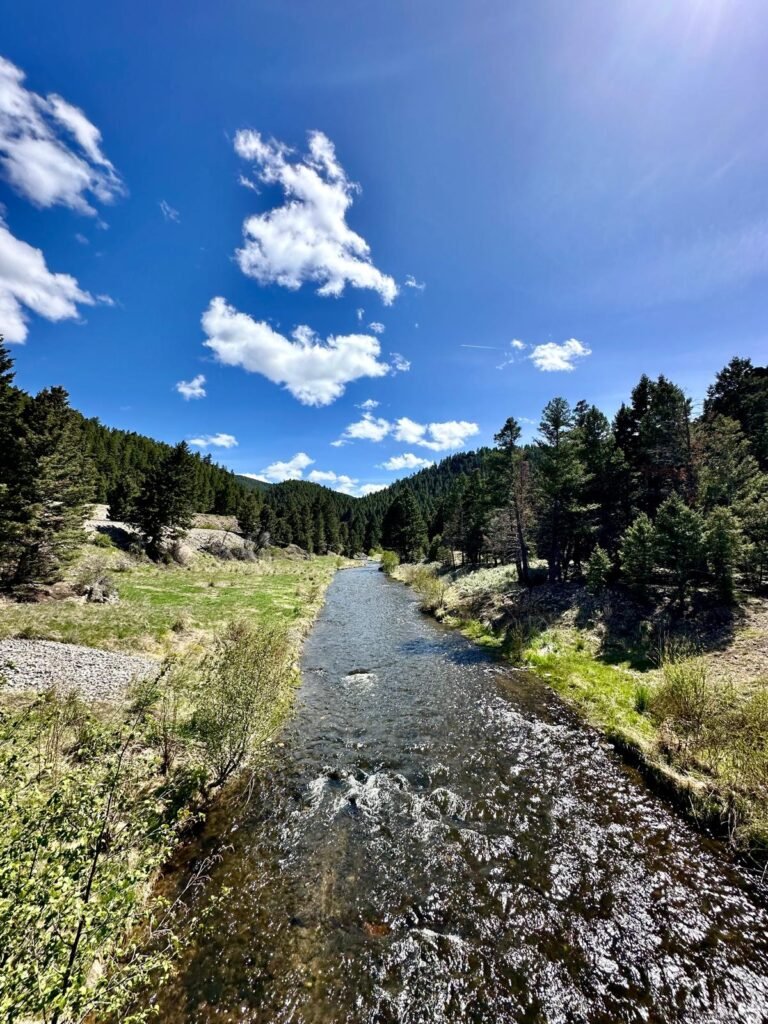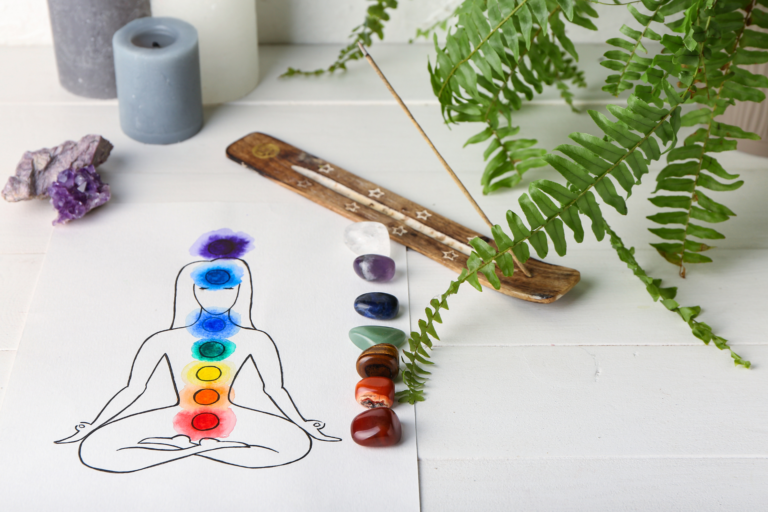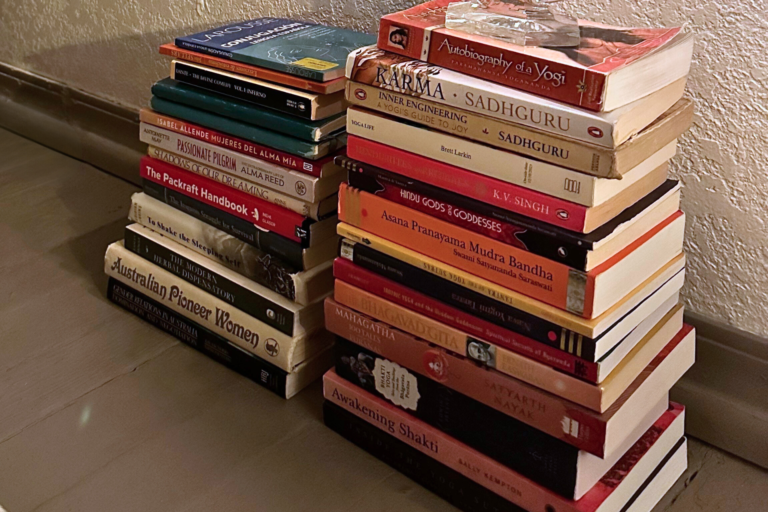The 8 limbs of yoga and living a yogic lifestyle
Maybe you’ve heard that the yoga postures, called Asanas, are just one aspect of the eight limbs of yoga. That’s true and demonstrates the importance of physical postures: 1/8th importance in all of Yoga and is only the fourth limb of Yoga.
Because the eight limbs of Yoga guide my entire yoga practice, including my teaching style, I wanted to outline the eight limbs here. This way, you can see my interpretation and explore your own interpretations further.
I’m trained in classical Hatha Tantra, which means that I’m hyper focused on chakra energy. If you’d like to read some of my favorite books on these topics, which have completely informed the way I teach yoga, then I recommend beginning here:
The eight limbs of yoga foster self discipline, which ultimately cultivates a meaningful and purposeful life. After all, if you can establish the discipline to remain in the present moment and channel life force energy in a precise way, then regular modern world stuff seems like a walk in the park.
The whole point of the Yoga Sutras is that you can create a fulfilling and healthy life when you practice yoga.
As you’ll soon learn, and as I’ve already mentioned, the 8 limbs of yoga include a lot of practices that are more than just yoga poses.
The eight limbs of yoga are an entire yoga philosophy that drives your entire yoga practice.
Without further adieu, let’s explore the eight limbs of yoga, according to the Yoga Sutras by the sage Patanjali, and how they influence your yoga practice, daily living, and overall perspective on life. As you’ll notice, all of the yoga sutras prepare you for meditation and then, finally, Samadhi (aka enlightenment).
1. Yama
Key aspects: Moral vows, ethical standards, and integrity, focusing on behavior and how you conduct yourself in life.
Think of the Yamas and Niayamas as the commandments of Yoga, where the first limb, the Yamas, are the “ethical disciplines” and the second limb, Niyamas, are the “self-disciplines”. These are guidelines for your daily life that extend beyond your yoga mat.
It’s become of one particular Yama, Ahimsa, that many yogis are vegetarian.
Let’s explore the Yamas now.
The five Yamas (ethical disciplines)
The first of the eight limbs of yoga are the Yamas, which are ethical disciplines for daily life. Before you even begin practicing advanced yoga poses, make an effort to master the five Yamas.
Here are the five Yamas and how they generally translate to today:
- Ahimsa (Non-violence): Advocates for compassion and non-harm towards all living beings, emphasizing kindness and understanding over causing pain. This is why many yogis (myself included) are vegetarian.
- Satya (Truthfulness): Encourages honesty and integrity in thought, word, and action, promoting authenticity and straightforwardness. This also means being true to your word and doing things that you say you’re going to do.
- Asteya (Non-stealing): Focuses on not taking anything that isn’t freely given, including material items, time, or ideas, fostering a sense of fairness and respect. This is especially relevant today, when many of us are stretched thing as it is. Think about how you can not steal energy, time, and valuable personal resources from people in your life.
- Brahmacharya (Celibacy or right use of energy): Traditionally associated with celibacy; in a broader sense, it pertains to the proper management of sexual and other energies. Rather than completely indulging in something that is purely pleasurable, reserve your indulgences for more meaningful experiences.
- Aparigraha (Non-greed): Involves letting go of attachment to possessions or desires, encouraging simplicity and contentment with what one has. Don’t hoard energy, time, things, routines, or expectations. Show up and do the work and expect nothing in return.
2. Niyama
Key aspects: Self-disciplines and spiritual observances, including regular habits and rituals like meditation and contemplative walks.
The idea is that once you’ve mastered the Yamas, then you can move forward to the second limb of yoga, the Niyamas. Many yogis, myself included, try to master what’s achievable first.
The Niyamas are slightly more intense than the Yamas because they have to do with self control.
How well can you care for yourself, even when you don’t want to?
How content can you be even when you don’t like a situation?
How easily can you let go of things that grind your gears?
These are the questions that the Niyamas ask a yoga practitioner. Let’s explore the second limb of the eight fold path.
The five Niyamas (self-disciplines)
The five Niyamas give clear guidelines on how to live your daily life so that you preserve your life force energy for cultivating a more meaningful and purposeful life. This is why you’ll see super bare living conditions in Ashrams (spiritual educational centers) around the world. The entire yogic lifestyle begins with a pure and disciplined lifestyle.
Here are the five Niyamas and how they relate to modern times:
- Saucha (Purity): Promotes cleanliness of body, mind, and environment, supporting health and clear thinking. You’ll see different cleansing techniques like tongue scraping, oil pulling, and others that originate from this Niyama.
- Santosha (Contentment): Encourages acceptance and happiness with what one has and where one is in life, cultivating an inner peace irrespective of external circumstances. This really begins with self study and understanding your true self and where that belongs in this universe. Basically, it’s a process of realizing that nothing really matters at all so you might as well be content with your current situation.
- Tapas (Discipline or austerity): Involves self-discipline and willpower, motivating one to persist in practice despite difficulties and discomfort. I like to consider Tapas when I am doing things I don’t feel like doing but that are important for my well-being, including practicing meditation and yoga even when I don’t feel like it.
- Svadhyaya (Study of the self and the scriptures): Advocates self-reflection and the study of spiritual texts as a path to self-knowledge and enlightenment. A lot of the yoga experience is all about taking the lessons learned through the yoga sutras and reflecting on your own life. This is why many yogis swear that yoga was a launchpad for an era of deep personal growth.
- Ishvara Pranidhana (Surrender to a higher power): Calls for the dedication of one’s life to and faith in a higher power, fostering a sense of humility and purpose beyond the individual self. This is why Montana calls to me. There is plenty of opportunity to explore my higher power all around me in this unbelievably beautiful state. It reminds me that I am just a speck in this tiny world. Even a hike through the forest a type of yoga practice as it brings me closer to universal consciousness (aka sharing consciousness with the trees, the rivers, the rocks, and everything in between).
3. Asana
Key aspects: Physical postures practiced in yoga, aiming to improve strength, flexibility, and balance while also aiding spiritual growth.

And here we are, finally exploring the physical postures of yoga as the third limb of yoga. Asana focuses on the physical body as a conduit of energy. So a yoga practice becomes a very prescriptive sequence designed to move energy through your chakras in a particular way.
Because alignment and conscious placement of the physical body is so important in yoga, you naturally become completely engulfed in the present moment.
Are my hips square? Is my chest open? Are my legs engaged? How’s my breath?
Asana also develops physical strength and flexibility, which are two important aspects of overall physical health. The idea behind Asana is that you can create such a pristine physical body that energy can flow freely through your chakras.
4. Pranayama
Key aspects: Breath control or breathing techniques designed to influence the flow of prana, or vital life force, in the body.
The fourth limb of yoga focuses on breathing exercises. By regulating breathing, pranayama helps to calm the mind, prepare it for meditation, and manage the energy flow within the body.
You’ll often experience breathing exercises at the beginning of a yoga class to help bring you into the present moment and balance your energy channels before beginning your Asana practice.
The most common Pranayama practices taught in yoga classes are:
- Ujjayi (Ocean Breath): Characterized by breathing through the nose with a slight constriction in the throat, creating a soothing sound reminiscent of ocean waves. It’s often used in Vinyasa and Ashtanga practices to help maintain rhythm and focus.
- Anulom Vilom (Alternate Nostril Breathing): This involves alternately breathing through one nostril while closing the other, using the thumb and ring finger. It helps balance the left and right hemispheres of the brain, promoting mental clarity and calmness.
- Kapalabhati (Skull Shining Breath): A series of short, forceful exhales followed by passive inhales. This technique is used for cleansing the lungs and sinuses, energizing the mind, and invigorating the body.
- Bhramari (Bee Breath): Involves making a humming sound during exhalation, reminiscent of a bee buzzing, which calms the mind and reduces stress.
- Sitali (Cooling Breath): Entails inhaling through a curled tongue and exhaling through the nose, cooling the body and calming the mind, making it ideal for hot weather or after heated exercises.
5. Pratyahara
Key aspects: Withdrawal of the senses, meaning turning inward to detach from external sensations to enhance inner awareness.

Pratyahara is often referred to as the “forgotten limb” of yoga, yet it serves as a crucial bridge between the external practices and the internal dive towards deep meditation. In Pratyahara, the focus shifts from the outside world to the inner realm, teaching us to detach our senses from external stimuli.
This sensory withdrawal helps in cultivating a deeper level of concentration and mindfulness, essential for the following limbs of concentration (Dharana) and meditation (Dhyana).
This is why you’ll see dark retreats, silent meditation retreats, and other types of yoga experiences that isolate the practitioner from external stimuli.
By mastering Pratyahara, we gain control over our reactive mind, which often responds unconsciously to sensory input (like stress, clutter, sounds), and instead, we learn to consciously guide our focus inward.
This is where we get to the juicy parts of yoga: this limb embodies the essence of yoga as a practice of internal exploration and self-regulation, setting the stage for a profound transformation in how we perceive and interact with our inner selves.
6. Dharana
Key aspects: Concentration, focusing one’s mind on a single point, object, or thought without distraction.
Dharana, the sixth limb of yoga, involves profound concentration and the ability to focus one’s mind unwaveringly on a single point or task. This practice is not just about avoiding distraction, but about cultivating a deep, sustained form of mental focus.
In Dharana, all mental faculties are directed towards a specific point or idea, which might be a physical object, a mantra, or even a complex concept. This is where practices like candle gazing come into play.
This intense concentration prepares the mind for the next stage of yoga, Dhyana, or meditation. The skills developed in Dharana also translate to mental clarity and focus in everyday life, enabling a yogi to maintain mental composure and presence in all of life’s whacky situations.
7. Dhyana
Key aspects: Meditation or contemplation, an uninterrupted flow of concentration to deepen meditation and foster a deeper connection with the divine.

The seventh limb Dhyana, or meditation, takes the focused energy developed in Dharana and extends it into a continuous flow. Think of it like losing yourself in a good book or becoming so absorbed in a hobby that time seems to stand still.
In Dhyana, this deep immersion happens within the mind. It’s about maintaining that thread of concentration in a smooth, unbroken stream, which allows for a profound connection with the true self and, ultimately, the divine.
This practice isn’t about forcing concentration but rather letting go into the flow of meditation, where the sense of self begins to dissolve. You might say it’s like tuning into a frequency where only you and the universe exist. It’s quite the experience and one that can bring immense peace and insight into your life.
While there are many meditation practices out there, they’ll all be easier to practice when you first move through the first six limbs of yoga.
8. Samadhi
Key aspects: Bliss or enlightenment, the ultimate stage of yoga where the practitioner merges with the object of meditation, achieving a state of superconsciousness.
Samadhi is often described as the ultimate goal of yoga, where all the previous stages culminate in a state of complete unity and blissful enlightenment. Imagine a moment where there’s no separation between you and everything else—you are part of everything, and everything is part of you.
In Samadhi, the meditator merges so deeply with the object of meditation that the sense of individual self fades away, replaced by a profound connection to all that is. It’s like the ultimate dissolution of all boundaries, achieving a state of pure consciousness, beyond thoughts, judgments, or identity. This isn’t just about peace; it’s about experiencing life in its fullest, most unbounded form.
Truly, it’s as profound as it sounds, and while it may seem elusive, it’s a state that deepens and enriches the yogic journey, offering glimpses of the infinite within the finite. Many yogis work lifetimes toward achieving Samadhi, so don’t get too discouraged when you aren’t dissolving into universal consciousness like in the movie Lucy.
After all, Santosha encourages us to practice contentment right where we’re at and enjoying the journey toward self realization anyway.
Explore the eight limbs of yoga with me
Want to explore the yoga sutras further in a guided container? I’d love to teach you alllllll about it. Contact me an let me know what you have in mind and let’s see if we can create a little educational experience for you.










One Comment